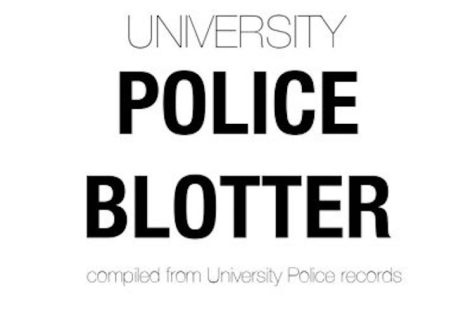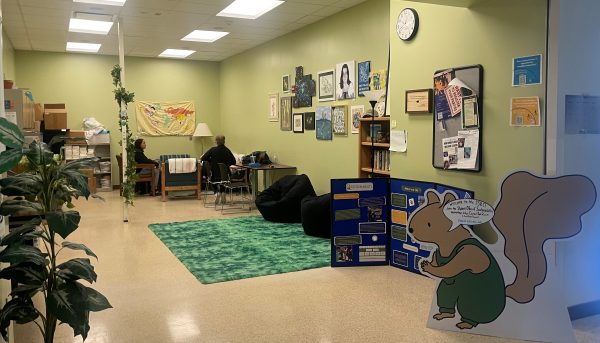Whiteboard and racial harassment in dorms
On Nov. 9, Terry Yoon was walking to her dorm room in Towers Hall when she noticed a new drawing on her whiteboard.
Among the notes wishing her good luck on midterms and a countdown to her graduation in December, there was a drawing of a penis.
The drawing, she said, made her feel like she was being harassed, and it wasn’t the first time something like that had happened. After some thought, she talked with her resident assistant and Hall Director and decided to file a police report on the incident.
“I thought, someone has to start this to improve the diversity here,” she said. “That’s why I made a police report, to show that these things happen.”
Assistant Director of Housing Deb Newman said the first thing the housing department does in issues of harassment is ask the victim if they have a preference of what action they want to take. If the incident is severe enough, they will call the police, she said.
“We don’t typically call when we have penis drawings because that happens a lot,” she said. “It’s frustrating to deal with and we’re looking into way to try to reduce the drawings.”
Affirmative Action Director Teresa O’Halloran, who handles cases of racial bias and sexual harassment, said issues in the dorms are taken very seriously.
In the past couple of years, housing has implemented a process of handling issues of things like graffiti in residence halls, she said. Typically, the RA takes a photo of the graffiti, the police are called and sometimes a police report is filed.
O’Halloran said issues of penises being drawn on whiteboards are not as serious of an issue as someone leaving a note that directly attacks the resident.
“There’s different levels of severity with these issues,” O’Halloran said. “When it seems to be drunk people drawing penises on whiteboards, that doesn’t seem to be directed at anyone in particular. In my mind, there are worse, more directed messages.”
The first incident where Yoon, a Korean-American woman, remembered feeling harassed in her dorm happened in mid-September, she said.
“A group of guys was hanging around the hallway and my door was open,” she said. “They saw me in my room and suddenly began talking about Asian people, and started (saying) ‘ching chong, ching chong.’”
Though she spoke with her RA and hall director, Yoon did not want to report the incident.
“I didn’t want to make a big deal about it, because you know, maybe they’re young,” she said. “Maybe they don’t know better.”
She said living in a hall like Towers, there are a lot of people and many freshmen who are still learning how to be mature.
Yoon is from California, which she described as being more diverse than Eau Claire.
“I’d never experienced anything like this before,” she said. “These guys probably think they’re being funny. But it’s a bigger issue than that because to some people, it’s offensive.”
But, she is not alone in instances of racial harassment on the Eau Claire campus, she said.
“I’d talked to a few international students, and they had all gone through similar things,” she said. “I asked them, ‘why didn’t you report it?’ and it was like ‘we’re just going to leave in a semester.’ They don’t see a point in starting trouble over it when they’re leaving so soon.”
So she reported the drawing incident and also sent an email to Chancellor James Schmidt, who replied to her email right away, Yoon said.
Housing moved Yoon to a different room, where she said she is already more comfortable.
Newman said issues of bias aren’t reported very often.
“A few times a year, we do have bias-related incidents, and we take them very seriously.” she said.
They will put up informational postings in the halls of the dorms, and they have peer diversity education to try to remedy bias-related incidents, she said.
“It’s a challenge, because it seems like some of these things are becoming prevalent again on campus,” Newman said. “I think that has to do with how every year we have a new group of students coming in.”
Dean of Students Joseph Abhold said issues of bias, racism, sexism and homophobia is something the university is always trying to combat because there are always new students.
“One of the issues is we have turnover in students, and every year we get a new batch of students who may not have gotten clear messages that it’s not OK to do some of these things,” he said.
He said the university has created many ways to educate students about the harms of racism, homophobia and sexism, be it through student organizations, the LGBTQ and Women’s Resource Center, the Multicultural Affairs office and coursework.
“I do think that as a society and as a campus, we’re making progress with what’s being brought to light and the amount of uncivil actions and speech that are going on,” he said.
He said he acknowledges there isn’t a perfect way to combat these biases, but the university wants to know about these things when they happen so they can correct the incidents and help the student who was victimized.
One way to inform the university is with a Bias Incident Reporting Form on the their website. Students can fill out the form to let the university and Bias Incident Report Team know about the problem.
Abhold said students can fill out these forms anonymously and the BIRT and university will look into resolving the issue.
“I’m really glad that students have the courage to be reporting it and that we’re creating the expectation that we’re going to address it.”
Yoon said she was glad the university responded to her and helped her. But she thinks there needs to be more education about different cultures for students and hall directors because she is not the only person to experience harassment.
“I think it would be good to have a place similar to the LGBTQ Safe Space on campus,” she said. “A place for people to go to discuss these issues, and so faculty can be more educated about these different cultures.”





